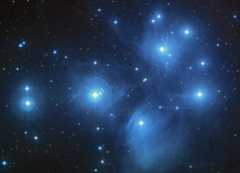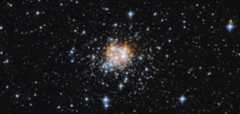India Heads to the Moon With Chandrayaan 2
By:David DickinsonJuly 22, 2019 0
0
Get Articles like this sent to your inbox
By submitting this form, you are consenting to receive marketing emails from: Sky & Telescope. You can revoke your consent to receive emails at any time by using the SafeUnsubscribe® link, found at the bottom of every email.Emails are serviced by Constant Contact
India enters the 21st-century race to the Moon with its Chandrayaan 2 mission.

ISRO
The skies lit up on Monday July 22nd, as India's ambitious Chandrayaan 2 lunar mission lifted off. At 9:13 UT (5:13 a.m. EDT), an Indian Space Research Organization (ISRO) Geosynchronous Satellite Launch Vehicle (GSLV) Mk III rocket launched from Satish Dhawan Space Center, near the Bay of Bengal coast. The launch was delayed from July 14th due to a technical fault.
Chandrayaan 2 (Hindi for "Moon craft") is an all-in-one package, including an orbiter, lander and rover. The mission follows in the footsteps of the successful Chandrayaan 1 orbiter mission that launched in 2008; contact with that mission was lost in August 2009.
The historic launch of#Chandrayaan2 from Sriharikota is a proud moment for all Indians. Congratulations to our scientists and engineers for furthering India's indigenous space programme. May@ISRO continue to master new technologies, and continue to conquer new frontiers
— President of India (@rashtrapatibhvn)July 22, 2019
On September 7th, the mission is due to land on the plain between the Simpelius N and Manzinus C craters near the lunar south pole. Chandrayaan 2 will be the second mission to land in the lunar south pole region after China'sChang'e 4, which landed on the lunar farside earlier this year. Chandrayaan 2 willland on the lunar nearside, slightly closer to the lunar south pole. An alternate landing site is located near Klaproth Crater.
The ISRO reports that the spacecraft is currently in good health and orbiting Earth. Now, Chandrayaan 2 will perform a series of five orbital burns over the next few weeks, gradually raising its orbital apogee for lunar capture in early September. Chandrayaan 2 will eventually attain an orbit 62 miles (100 kilometers) above the lunar surface, mapping the Moon and the proposed landing site with its Orbiter High Resolution Camera (OHRC). The orbiter also carries a synthetic aperture radar, an infrared spectrometer, and experiments designed to examine the tenuous lunar exosphere and monitor solar X-rays.

Dave Dickinson.
Then, on September 6th or 7th, the Vikram (Sanskrit for "valor") lander will detach from the orbiter and head toward the lunar surface. The combined mass of the rover and lander is 3,243 pounds (1,471 kilograms). During descent, the lander will use two onboard cameras to autonomously assess its final landing site. This is the riskiest part of any mission, and the point where the Israeli Space Agency and SpaceILlost its Beresheet lunar lander earlier this year.
Further reading: A host of missions are aiming for the Moon in the next five years. Explore the near future withSky & Telescope's infographic from the July 2019 issue.
After landing, engineers will instruct Vikram to deploy a small, 27-kilogram (60-pound) rover named Pragyan (Sanskrit for "wisdom"). The solar-powered rover and lander will arrive near lunar sunrise, and are expected to last until local lunar sunset two weeks later, though there are plans to try and wake them both up after the long lunar night. The orbiter's primary mission should last one year.

ISRO
The primary objective of the mission is to search for the presence of water near the lunar south pole. A2018 study of near-infrared spectra taken by Chandrayaan 1 found direct evidence for water ice in the permanently shadowed craters near the poles. Water could prove valuable for future lunar outposts, including the renewedU.S. Artemis initiative that aims to return astronauts to the Moon by 2024.
Vikram carries a seismometer, thermal probe, and an instrument to measure variation and density of lunar surface plasma, along with a laser retro-reflector supplied by NASA's Goddard Spaceflight Center.

NASA / GSFC.
The Pragyan rover includes a laser and X-ray spectrometer to analyze lunar soil, along with two 1-megapixel stereo NAVCAMs.
India in Space
This launch also follows India's successful Mars Orbiter Mission,which entered orbit around the Red Planet on September 24, 2014. The Chandrayaan 2 missioncost $165 million (U.S. equivalent) from design to launch, one-third of which was the cost of launching the GSLV rocket. The ISRO also has plans tosend missions to the Sun and Venus, and perhaps launch a crewed orbital mission in the early 2020s.
If Chandrayaan 2 is successful, it would make India the fourth nation to land softly on the Moon, behind the United States., the Soviet Union (Russia hasn't returned to the Moon since to breakup of the U.S.S.R.), and China. All eyes will be on Vikram, come September 7th.
About David Dickinson
David Dickinson is a freelance science writer, high school science teacher, retired enlisted U.S. Air Force veteran and avid stargazer. He currently resides with his wife Myscha in Bristol, Tennessee. David also writes science fiction in his spare time. He posts as @AstroDave on BlueSky about space news and sky-watching worldwide.









